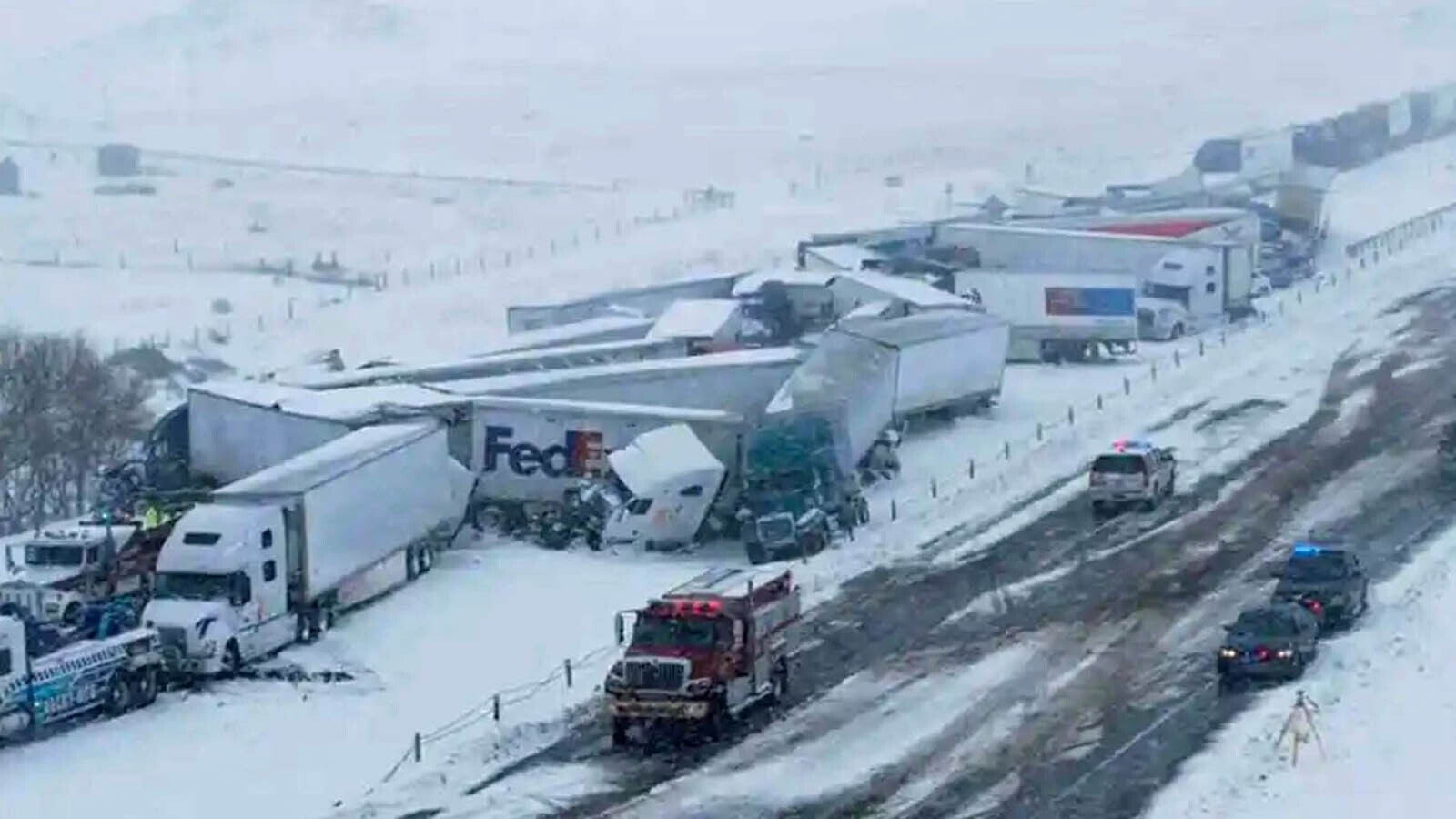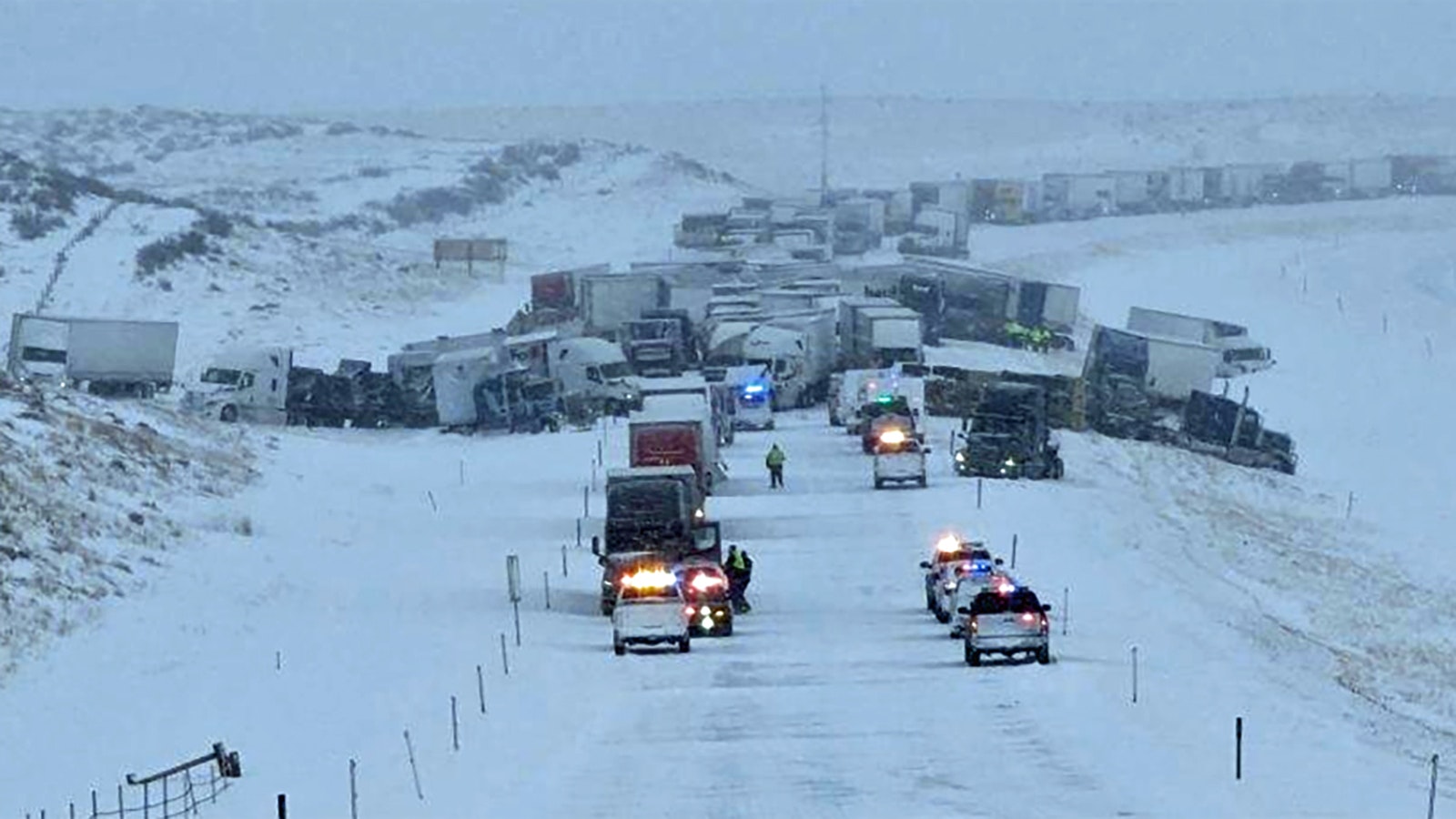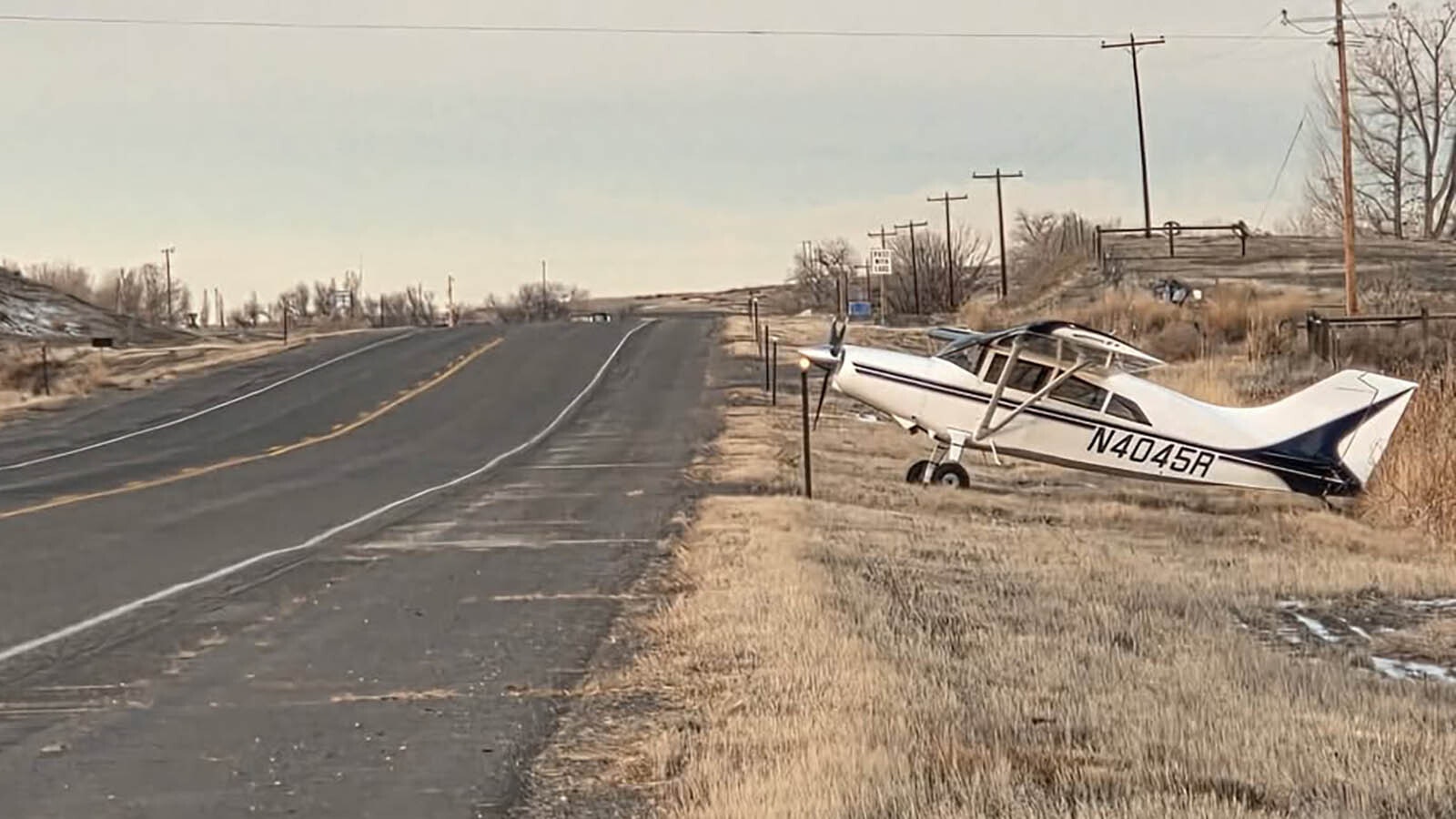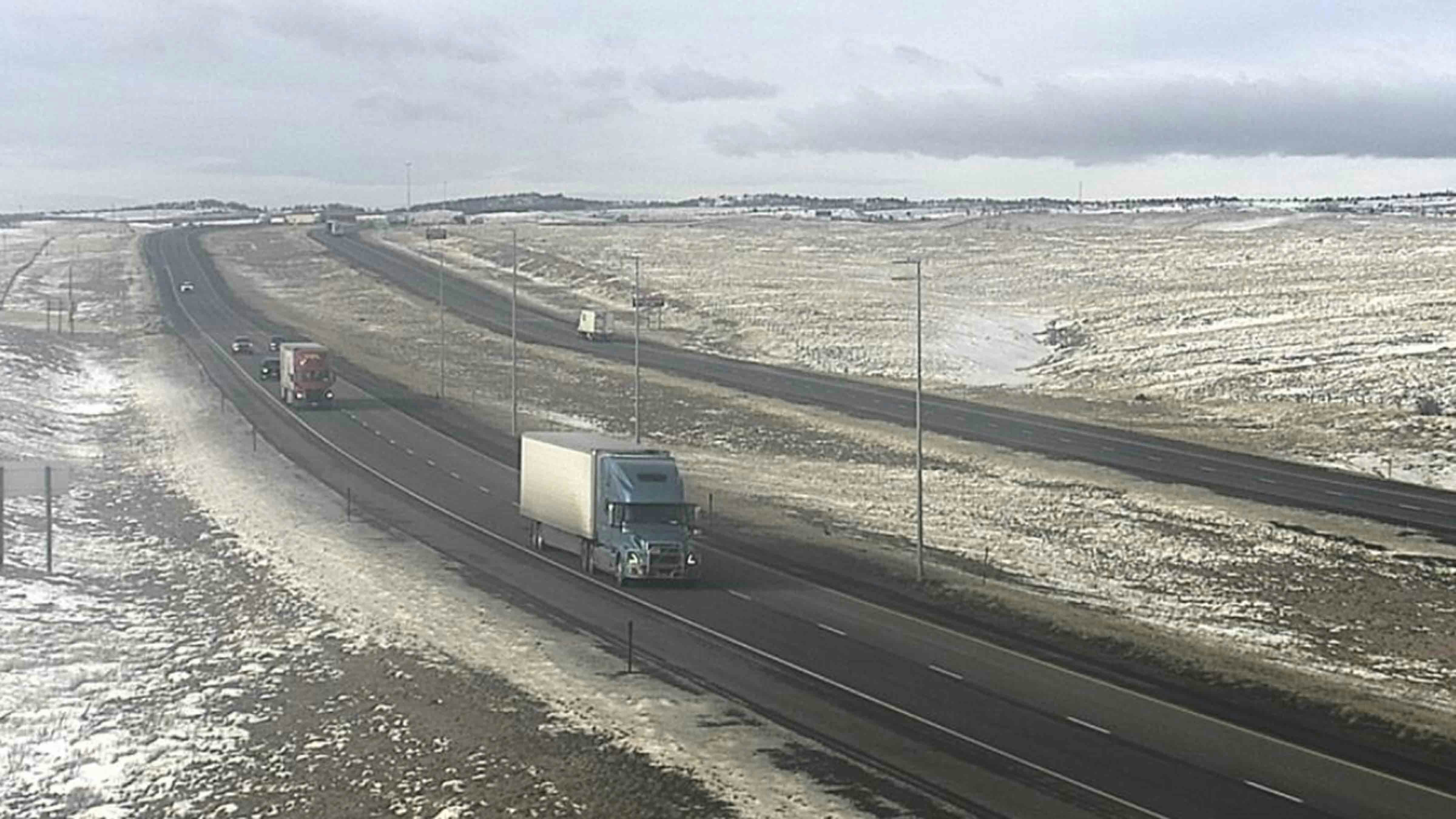Mark Force has seen it all after nearly a decade working as a tow driver in Wyoming, from 30-vehicle pileups to cars that have slid off the roads in blizzard conditions.
“I've seen some ugly ones out there, so I don't like to sit and say all these things that come to mind right away,” said Force, a heavy wrecker operator with I-80 Towing & Recovery. “The biggest tips I can give are slow down, don’t follow too close.
“The biggest wrecks that we see that are the most casualties are (from) impatience.”
Interstate 80 across southern Wyoming is infamous for being one of the most dangerous stretches of highway in the nation during winter. It’s even earned the nickname “Snow Chi Mihn Trail.”
With lots of nothing between towns, help won’t come in a hurry if you do end up in a pileup. Force pointed to a 30-car pileup around Thanksgiving 2023 near the I-80 summit area near Laramie where travelers were forced to wait hours for help because of how hard it was to get to them.
He and other tow drivers had to use Old Highway 30 and then come up the wrong side of the road from the Vedauwoo exit back to the summit to get to anybody.
“If you do slide off the road, it might take a while for anybody to get to you in Wyoming, even the police officers, it takes a while to get there,” Force said. “So you can be sitting out there. You could have broken windows. Your heater may not be working because the engine is off and you might be out there two, maybe three hours easily in the wind and blowing snow.”
As Wyoming motorists navigate another winter, road experts say they need to prepare for winter weather and the possibility of getting stranded during a road-related emergency. The highways will be busier than usual and the weather, often unpredictable.
Doug McGee, a spokesperson for WYDOT, said traffic grows this time of year.
McGee recommended folks download WYDOT’s 511 app for up-to-the-minute updates and plan their trip with wyoroad.info, which offers resources like maps and weather forecasts.
Both Force and McGee cautioned travelers about the combination of winter weather and the sparsely populated nature of the state.
“There can be really long stretches of road in Wyoming that can sort of lull folks into paying less attention to the road,” McGee said. “Stay alert. If you're tired, find a safe place to rent. If you're on unfamiliar roads, then stay extra vigilant.”
While all travelers won’t encounter an emergency, everyone traveling in the state should keep several essentials in their vehicles:
• A shovel and a small bag of sand or kitty litter.
• A blanket and/or sleeping bags.
• Warm winter clothes and snow boots.
• A can of deicer for frozen door locks and wiper blades.
• Extra water and non-perishable food.
• A first-aid kit.
• Flares and a flashlight with extra batteries.
• Jumper cables, snow chains and tow straps.
• A phone charger.
• A bright bandana to put on your car’s antenna.
• Rope.

Stay In Your Car
Force said many travelers’ first instinct when sliding off the road is to leave their vehicle and walk back to the road to get help. Doing so, however, can be a dangerous mistake.
Once outside a vehicle, drivers can become disoriented and lost in winter conditions. In a pileup situation, they also run the risk of getting directly hit by other vehicles. If you need to leave the vehicle, it’s best to tie a rope to yourself and the car so you can find your way back.
“(People) think they're not going to be able to be seen and they try and walk up the to the roadway and stuff like that. They can wind up freezing to death,” Force said. “People will see what happens. I had one up at the summit area … a car went off and down over a little rock embankment. They still got found. It's not like they weren't seen.”
If you do get stuck in snow and getting out of the car is safe, clear a path around the tires and then try to get the car loose by using kitty litter, sand or your car’s floor mats for extra traction and then rock the car back and forth in reverse and drive
If it’s becoming clear that you’re stranded, make sure you keep your vehicle visible to passersby by tying a brightly colored bandana or article of clothing to your antenna or using reflective tape flares.
Stay warm by donning warm clothes and blankets immediately. You can also run the motor for 10-minute increments every hour to use the heater, but make sure your tailpipe is clear and your windows are slightly open to keep fresh air flowing and avoid fumes.
Avoiding An Emergency
Although accidents do happen, there are several steps travelers can take to avoid an emergency altogether.
Travelers should match their driving habits to the conditions, including slowing down during poor visibility and never using cruise control on snowy and icy roads. Leaving space between cars and braking gently can also be the difference between an accident and just a close call.
Tony Pacheco, another driver with I-80 Towing & Recovery, also cautioned drivers to keep an eye out for snowplows on the road.
“I have a story (where) they were going too fast and then caught up to the plow,” he said. “He slammed on his brake and slid into the ditch. Just be mindful of the plows because they're out keeping the roads safe for you. If you see one, don't come flying up behind them.”
Other tips to be prepared include:
• Make sure your tires are inflated to the recommended pressure and that your brakes, lights and turn signals are working properly.
• Fill up your tank before leaving and keep it at least half full while traveling.
• Replace old windshield wiper blades and add windshield antifreeze to your window cleaning fluid.
• Clean any ice or snow off your lights, mirrors and windows and make sure your shoes are free of snow since slippery pedals are a safety hazard.
• Check the weather forecasts and road conditions and adjust travel plans if necessary.





